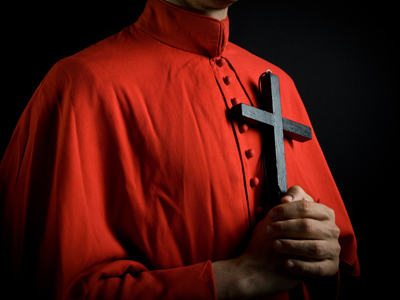
Ask the AI Tutor
Need help with Britain: Elizabethan England - Accession And Marriage? Ask our AI Tutor!
AI Tutor - Lucy
Connecting with Tutor...
Please wait while we establish connection

Roman Catholics were at a disadvantage when seeking Elizabeth I's hand.
Britain: Elizabethan England - Accession And Marriage
Explore how Elizabeth I secured her throne, handled marriage proposals, and managed Parliament while keeping everyone guessing about who would succeed her.
1 .
Charles, Archduke of Austria, threw his hat in the ring for Elizabeth's hand in marriage in 1563. Which religion did he practise?
Islam
Judaism
Protestantism
Roman Catholicism
Religious divisions were crucial in the 16th Century. Non-Christians or Catholics were at a disadvantage in seeking Elizabeth's hand. This factor did not, however, discourage a number from trying
2 .
Who was Elizabeth's heir when she took the throne in 1558?
Mary Tudor
Edward Tudor
Mary, Queen of Scots
James Stuart
Contemporaries worried that Elizabeth might be succeeded by another woman, and by a Roman Catholic one too
3 .
To which continental family did Francis, Duke of Anjou (previously Duke of Alencon) belong?
Bourbon
Valois
Hapsburg
Guise
Foreign candidates welcomed the chance to marry the English queen as they valued an English alliance against rival European states. Naturally Elizabeth was an even more valuable catch while she was of child-bearing age
4 .
In 1562 Elizabeth nearly died from a contagious disease. Had she died the succession would have been thrown into turmoil. From which illness did she suffer?
Bubonic Plague
Cholera
Polio
Smallpox
As an unmarried woman, with a disputed succession likely on her death, Elizabeth's health was always a major issue
5 .
Mary, Queen of Scots was a serious contender for the throne until her execution in 1587. Why was she put to death?
Plotting with Roman Catholics to overthrow Elizabeth
Following the Roman Catholic faith
Inviting the French king to invade England
Urging Scottish nobles to make war on Elizabeth
Mary's persistent Catholicism and her secret contacts with foreign powers put her in danger of treason charges
6 .
Which English suitor's chances as a bridegroom for Elizabeth were reduced when his wife, Amy Robsart, was found dead at the foot of a staircase?
Lord Robert Dudley, Earl of Leicester
Sir Walter Raleigh
William Cecil
Sir Francis Walsingham
There was acute rivalry at the English court for Elizabeth's favour, and even more for her hand in marriage. But she was unlikely to accept an English claimant for fear of fuelling factional disputes
7 .
Who eventually succeeded Elizabeth on the English throne?
James I
Henry IV of France
Margaret of Denmark
Philip III of Spain
Elizabeth never did marry, so the Tudor line died out on her death. She was succeeded by James Stuart who was already King James VI of Scotland and now became King James I of England
8 .
Ambassador de Feria pressed his monarch's claim for Elizabeth's hand. Which sovereign state was he representing?
Portugal
Spain
Italy
Belgium
Diplomats in London were by now often resident in the capital, and were able to arrange audiences with the Queen to seek her hand in marriage on their employer's behalf
9 .
Who was the legal heir to the throne after the execution of Mary, Queen of Scots in 1587?
James Stuart, Mary's son
Henry III of France
Christian of Denmark
Henry IV of France
By the age of 54 Elizabeth could not bear a child, but she still had value as a potential wife
10 .
Which European king, recently widowed, sought Elizabeth's hand from 1558, but later became hostile?
Eric of Sweden
Archduke Charles of Austria
Philip II of Spain
Henry II of France
Many foreign royals wooed Elizabeth as they wanted England's alliance against their diplomatic or military rivals
**Unlimited Quizzes Await You! 🚀**
Hey there, quiz champ! 🌟 You've already tackled today's free questions.
Ready for more?
Ready for more?
🔓 Unlock UNLIMITED Quizzes and challenge yourself every day. But that's
not all...
not all...
🔥 As a Subscriber you can join our thrilling "Daily Streak" against other
quizzers. Try to win a coveted spot on our Hall of Fame Page.
quizzers. Try to win a coveted spot on our Hall of Fame Page.
Don't miss out! Join us now and keep the fun rolling. 🎉
**Unlimited Quizzes Await You! 🚀**
Hey there, quiz champ! 🌟 You've already tackled today's free questions. Ready for more?
🔓 Unlock UNLIMITED Quizzes and challenge yourself every day. But that's not all...
🔥 As a Subscriber you can join our thrilling "Daily Streak" against other quizzers. Try to win a coveted spot on our Hall of Fame Page.
Don't miss out! Join us now and keep the fun rolling. 🎉






